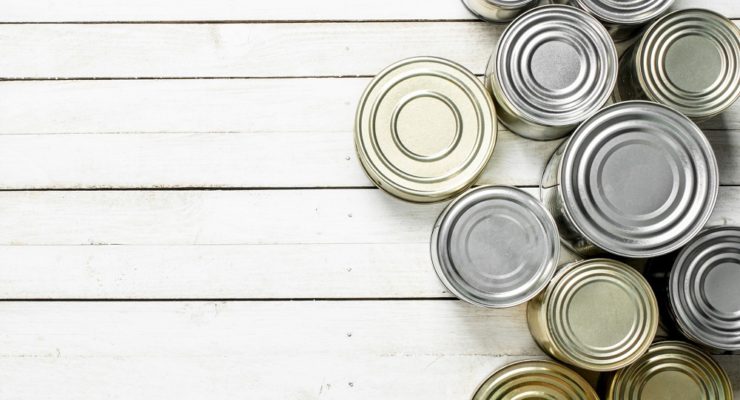Are You Really in a Weight Loss Plateau? 10 Reasons Why the Scale is Stuck
Article posted in: Diet & Nutrition Video
So, you took the leap and signed up for a weight loss program. You’re excited to lose weight, feel better and get healthy. But once you get started, it’s a whole different story. While you may feel like you’re doing everything to a T, the scale is stuck and you can’t figure out why.
There are many reasons why your weight loss could be at a standstill. Some are more obvious, while others are just plain surprising. Before you jump to the conclusion that you’ve hit a weight loss plateau, try to start with the basics to ensure you aren’t making any of these common mistakes. Sometimes it’s the little things that make the biggest difference!
It’s important to remember that when it comes to weight loss, it is all about maintaining a negative energy balance: This means that the “calories in” are less than the “calories out.” The “calories out,” also known as Total Daily Energy Expenditure (TDEE), is more than just your physical activity. Many factors contribute to this number. Click the link below to learn more about calories, TDEE and their importance during your weight loss journey:
Before we hop into the possible reasons for a slim-down stall, be sure to assess your goals. Disappointment often stems from exceptions. Your weight loss goals should be realistic, time frame included. Stop setting yourself up for disappointment by expecting the pounds to fall off instantly. Have patience and give yourself some grace. If you’re doing the work, that’s all that matters.
A healthy and realistic expectation of weight loss should be about one to two pounds per week. However, if you have a smaller amount of weight to lose or are approaching your goal weight, a weight loss of 0.5 pound per week is still a healthy rate of weight loss and something you should be proud of!
You want to lose weight at a healthy, gradual rate in order to minimize the effects of metabolic adaptation (your metabolism slowing down). While many of us may find that we lose weight quickly as we start out a new weight loss plan, as we progress with our plan a weight loss over 1% of your body weight per week is often not recommended, in order to avoid slowing down your metabolism.
Wondering if you’ve hit a weight loss plateau? Check out these 10 reasons why the scale may be stuck:
1. Overeating

This one is a given! As we mentioned earlier, weight loss is dependent on “calories in” being lower than “calories out.” If you’re eating too much for your current activity level and weight, this could definitely be a reason why the scale is stuck. Make sure you are staying within your recommended daily calories by keeping a food journal. The Nutrisystem app is the perfect tool to keep your meal plan organized throughout your weight loss journey.
2. Skipping Meals

If you thought that skipping meals would help with weight loss, guess again! While having a calorie deficit is essential to dropping pounds, research shows that eating too little can actually hinder your weight loss. If you’re regularly skipping any of Nutrisystem meals or snacks, you could be unknowingly sabotaging your success on the scale.
In a 12-month study, published by the Journal of the Academy of Nutrition and Dietetics, overweight or obese postmenopausal women who skipped meals experienced 4.3% lower weight loss compared to those who did not skip meals. According to ScienceDaily, research out of the University of Eastern Finland also found, “Children who skip main meals are more likely to have excess body fat and an increased cardiometabolic risk.” Piedmont Healthcare explains that skipping meals can alter blood sugar levels and decrease the metabolism.
If that’s not enough evidence to convince you to follow your meal plan, a review of 45 observational studies, published in the journal Obesity Research & Clinical Practice, concluded that skipping breakfast increases the risk of overweight/obesity and abdominal obesity. “There was no significant difference in these results among different age groups, gender groups, regions, and economic conditions,” says the researchers. They theorize that this connection is caused by changes in appetite and decreased satiety, leading to overeating and impaired insulin sensitivity.
3. Ignoring Nutrition Labels

Just because a food may say that it’s healthy, organic or all-natural on the label, that doesn’t mean that it’s a smart pick for your weight loss goals. Berkeley Wellness warns of the “health halo effect,” which occurs when a food or product may have a few healthy qualities but “is perceived as being virtuous in all respects.”
This health halo has been shown to cause consumers to overindulge in foods, just because of certain words and phrases on the label. “To avoid being influenced by the health halo effect, ignore buzzwords, slogans, and images that make foods appear more healthful than they really are (flip the package over to read the nutrition facts),” says Berkeley Wellness.
Click here to learn how to read a nutrition label! >
4. Forgetting Your Measuring Cups

In the United States, it’s no secret that food portion sizes have been growing for decades. You see it every single time that you dine out at your favorite restaurant. While you may think that you’re getting a good deal on your meal, these larger servings can cause you to overeat. This same issue comes back to bite you when you’re preparing your own meals and snacks. You get used to seeing and eating bigger portions, therefore you serve yourself more.
While Nutrisystem does send pre-portioned meals and snacks directly to your door, you will still need to incorporate some grocery additions and Flex meals on your own. To stay on track, go back to the basics and keep your measuring cups and spoons readily available. You can also invest in a food scale to ensure that you are eating the proper amounts of lean meats, nuts and cheese. Start doing this at every meal and snack time to refresh your memory on diet-friendly serving sizes. Be mindful of portions when preparing Flex meals and always measure your PowerFuels, SmartCarbs and Extras.
Can’t remember your portion sizes? Find out how to become a Nutrisystem Portion Pro, then check out the Nutrisystem Grocery Guide!
5. Not Keeping Track

Overeating, skipping meals and portion control can all be eased if you get more diligent with your food tracking. We recommend trying to track your diet at least 80% of the time or about five to six days out of the week. Be sure to accurately reflect your food intake, including portion sizes and ingredients. This way, if you notice the scale is stuck, you can take a look back at your journal and see where you may be overdoing it.
Not convinced? Take it from the experts: According to research, published in the journal Obesity, self-monitoring your diet is the number one predictor of weight loss success. “New research shows for the first time how little time it actually takes: 14.6 minutes per day on average. The frequency of monitoring, not the time spent on the process, was the key factor for those in the study who successfully lost weight,” says ScienceDaily.
Consider downloading the Nutrisystem app! It’s designed to complement your personalized Nutrisystem program. Easily log your food intake, water, physical activity, measurements and weight loss progress, all in one organized place.
6. Skimping on Protein and Fiber

Picking PowerFuels and SmartCarbs that are low in protein and fiber can also impact your weight loss. Try your best to maximize the protein in your PowerFuels and the fiber in your SmartCarbs. The more protein and fiber, the better! The reason? Protein and Fiber can help minimize metabolic adaptation. Protein is more thermogenic than carbohydrates and fats (meaning it requires more energy for digesting and absorbing). This means that you’ll burn more calories eating a high-protein food compared to something higher in carbs and fat. Fiber isn’t fully digested, so the calorie contribution from fiber is less than other carb sources.
Try swapping out your ordinary grocery additions with more nutrient-dense options. For your PowerFuels, try soy nuts instead of peanuts. Enjoy grilled chicken instead of a hard-boiled egg. For your SmartCarbs, pick berries or apples with the skin on instead of grapes or lower fiber fruits. You can also choose high-fiber cereals instead of regular versions, and whole grain breads with at least three grams of fiber per serving.
7. Lack of Exercise

If you’ve been skipping the gym or your daily walk, this could be a reason why the scale is stuck. Try to get moving every day for at least 30 minutes. A mix of cardio and weight training is a great way to get started. Always speak with your doctor before starting a new exercise or diet program.
Be sure revisit what you selected as your current activity level (both exercise and lifestyle activity) when you completed the questionnaire for your personalized meal plan. We factor this activity level into your calorie goal. If you told us that your activity was high, then you were given a higher calorie goal to support this activity. However, if you are not really doing this level of activity, your calorie goal may be too high and could stall your weight loss. Remember: “calories in” must be less than the “calories out!”
According to a research, published in the Journal of Epidemiology & Community Health, people tend to overestimate the how physically active they really are. We recommend really taking an honest look at how active you are during the day. You may need to go back and reset your physical activity responses in the Nutrisystem app. Make sure you set your activity level as your current level, not as a goal of where you would like to be.
Looking for an easy way to incorporate some physical activity into a busy schedule? Try breaking up that 30 minutes into three 10-minute workouts! Go for a walk three times a day, lift some weights or try some Pilates. Check out these 10 ten-minute workouts for more ideas! > Interval training can also give your metabolism a boost and help you burn more calories. Click here to learn more! >
8. Increasing Muscle

On the other hand, if you’ve been hitting the gym and putting on some muscle, you might also experience a stall on the scale. “Muscle is more compact than fat, so if you gain lean body mass, it is firm and occupies less space than fat,” says Baylor College of Medicine. If you know that this is the case for you, try to find other measures of success in the meantime. For example, your jeans may be fitting better or you may have more energy. These non-scale victories are just as valuable and important as a number on the scale.
Don’t have a set of dumbbells at home? Click the link below for nine household items you can use instead!:
9. Other Lifestyle Factors

Lack of sleep can disrupt weight loss. If you’re having trouble getting some shut-eye, try sticking to a regular sleep schedule, says The National Sleep Foundation. Limit your caffeine consumption and screen-time in the hours before bed. The light emitted by screens on televisions, computers, cell phones and tablets reduce your body’s production of melatonin, the hormone that regulates your sleep and wake cycle, says Harvard Health. You can also try this before bed exercise routine. >
Stress: We all experience it on some level in our lives. But did you know that stress can have an impact on the hormones associated with weight gain and hunger? Chronic stress can put a halt on weight loss and impact that number on the scale. Address the stress in your life with a little self-care. Try meditation, daily exercise and breathing techniques. You should also seek out a support system and engage in your community. If you’re feeling overly stressed, be sure to speak with your doctor.
Another reason you may not expect? A recent illness or injury can cause weight gain or stall due to increased inflammation that results in water retention. Additionally, recent injury or illness can decrease daily activity levels and cause a decrease in overall calories burned throughout the day that aren’t typically accounted for. Some medications may also stall weight loss. If this is the case, we recommend that you consult with their doctor for the best strategy for you, which may mean modifying your Nutrisystem program for a bit (limiting exercise, etc.). Once you have recovered, you should be able to start right back where you left off, pending your doctor’s approval. This set-back is not the end of your weight loss journey. Keep in mind that your overall health should always take precedence over the number on the scale.
10. Weight Loss Plateau

If you have eliminated the possibilities above and still aren’t seeing the scale budge, you could be experiencing a weight loss plateau. When this happens, you will need to adjust your daily calorie intake and/or increase the intensity and duration of your exercise. A good diet and exercise plan adjusts for your lowered energy needs as you lose weight. Connect with a Nutrisystem Weight Loss Coach to discuss your calorie goal in more detail. They can help you adjust it if needed. Don’t stress over this weight loss challenge. While it’s discouraging, it happens to everyone and you’ll get past it with a little perseverance.










